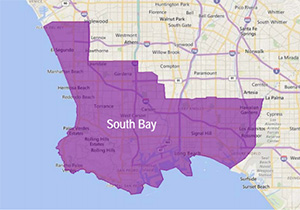Trending
Did Carson jump the gun on asking rents?

The demand for Class B space — particularly creative offices — has been driving net occupancy rates in the South Bay market. The net absorption of Class B space has eclipsed Class A space by 428,393 square feet during the last four quarters, according to a new report by Newmark Grubb Knight Frank.
But not all South Bay submarkets are finding instant success with creative space.
Carson — a city of about 100,000 situated 13 miles south of Downtown Los Angeles — faces a number of challenges when it comes to inventory, absorption and amenities. For starters, Carson has only 995,656 square feet of total inventory, by far the fewest in the South Bay region. El Segundo, for example, outpaces Carson by 11.3 million square feet.
Despite having less inventory, Carson faces a 29.3 vacancy rate. It also has a year-to-date negative absorption of 14,505 square feet.
The trouble, analysts say, is that Carson’s pricing is ahead of the curve. Class B asking rents, which primarily includes creative office space, is $2.38 a square foot in Carson, outpacing Class A rents at $2.22 a square foot.
The Carson submarket, although inland, may be trying to piggyback off rising demand for creative space that is overflowing from Playa Vista into El Segundo and making its way through the beach cities of Manhattan, Hermosa and Redondo. “Rates are up and [Carson] is definitely trying to capitalize on that,” said Mark Sokolowski, director of Global Corporate Services at Newmark Grubb Knight Frank.
Not that it doesn’t make sense, at least in future quarters. Carson is a submarket in transition, moving from inexpensive overflow for administrative offices to a focus on creative office spaces. However, rents for creative offices appear inflated right now, Sokolowski said.
“You have to drive to Carson and there aren’t many walkable amenities,” Sokolowski said. “You have to drive to go to lunch and by no means is anyone staying in Carson after the work day is over. You don’t have the pull and attraction of amenities like you do in downtown Long Beach and El Segundo, where after you’re done working you have the opportunity to get to know your colleagues at a happy hour or an eatery.”




